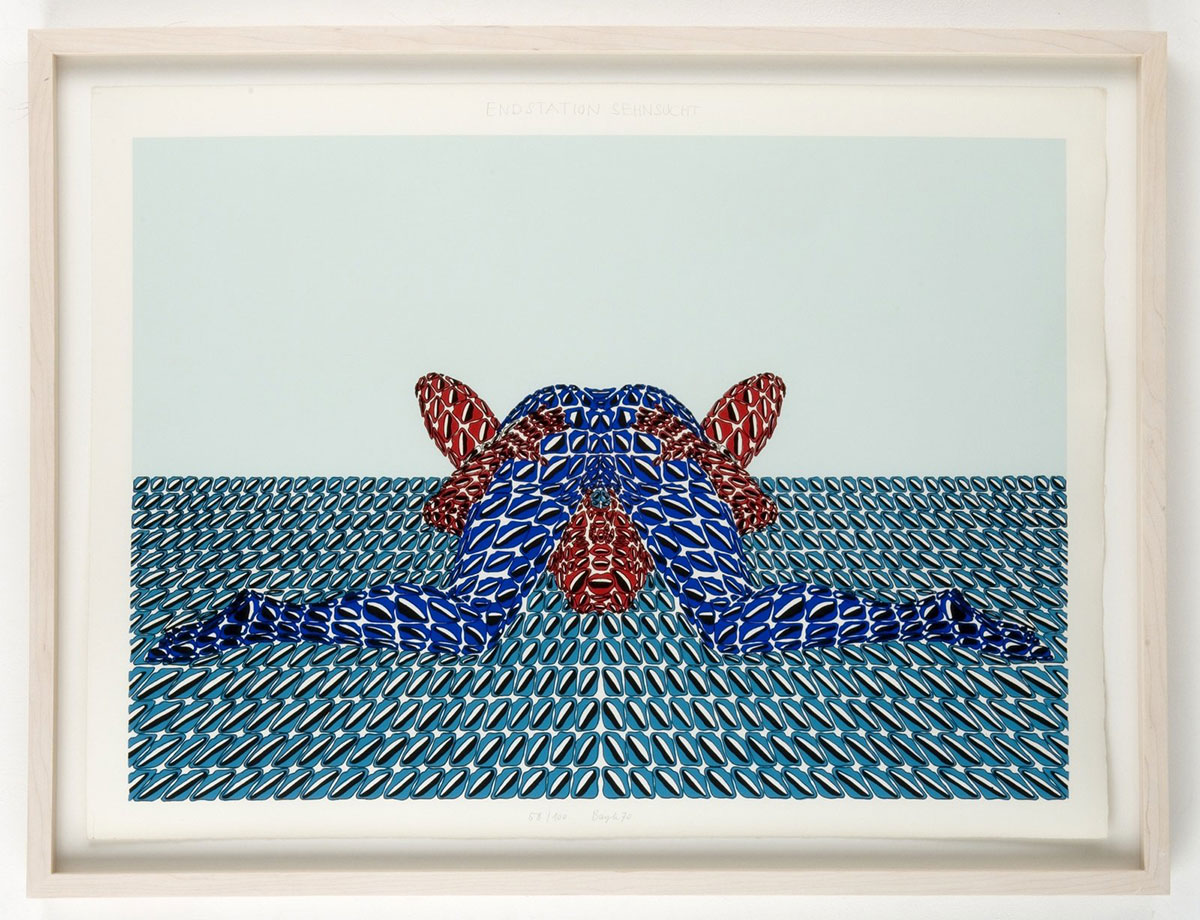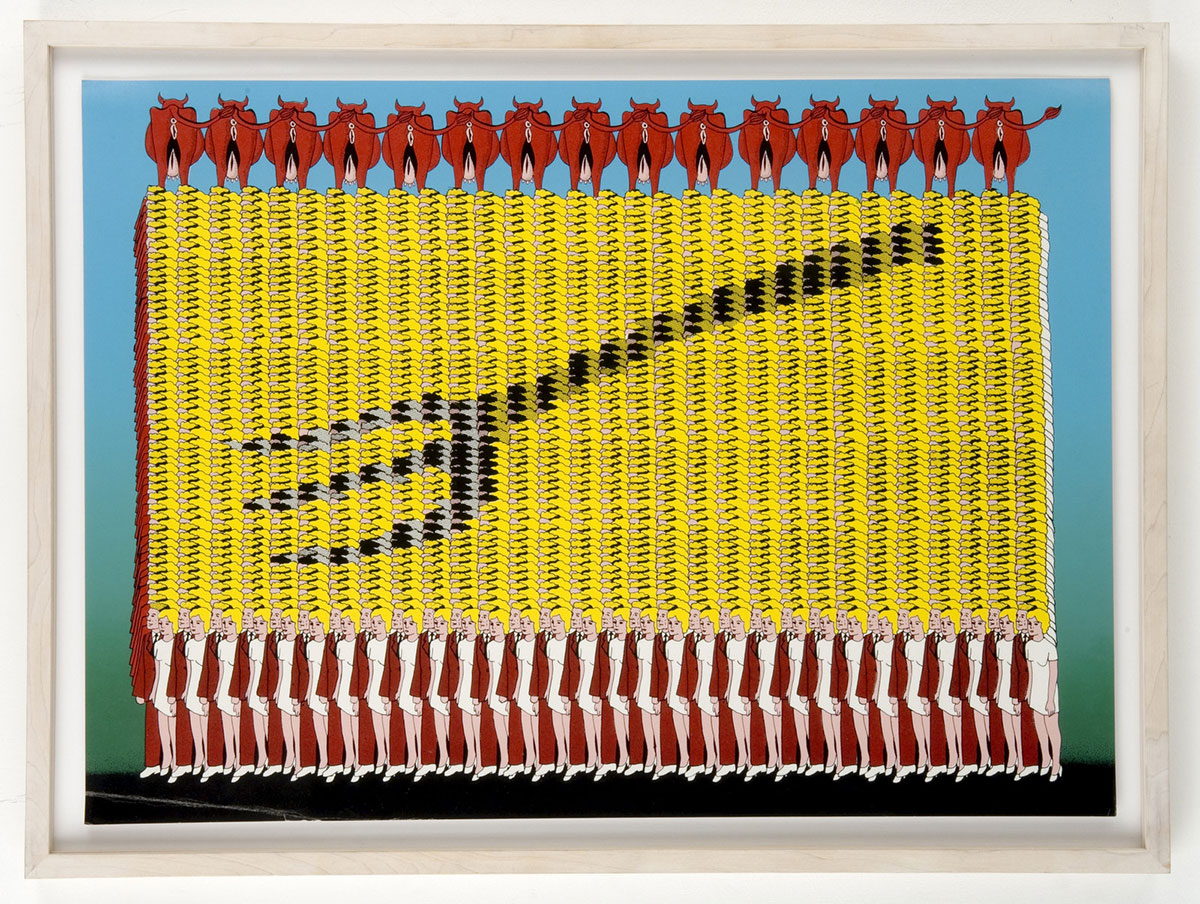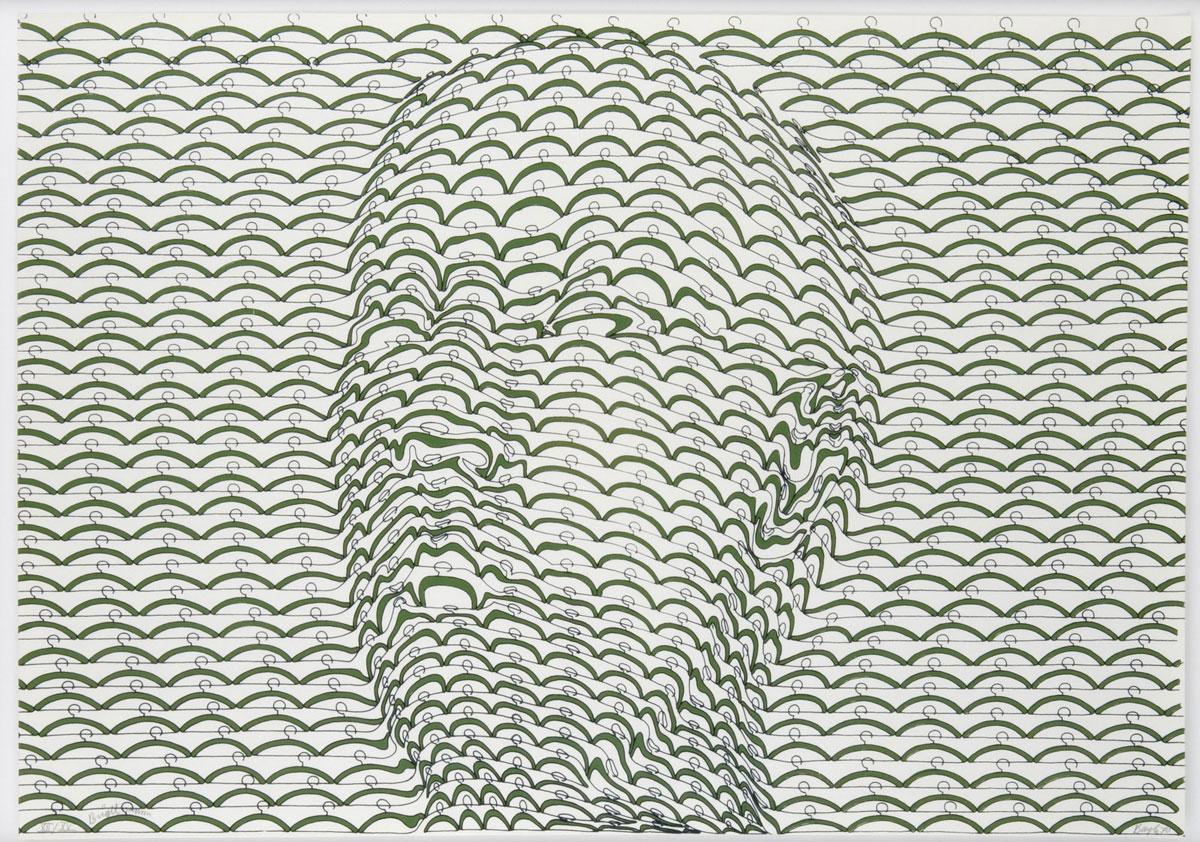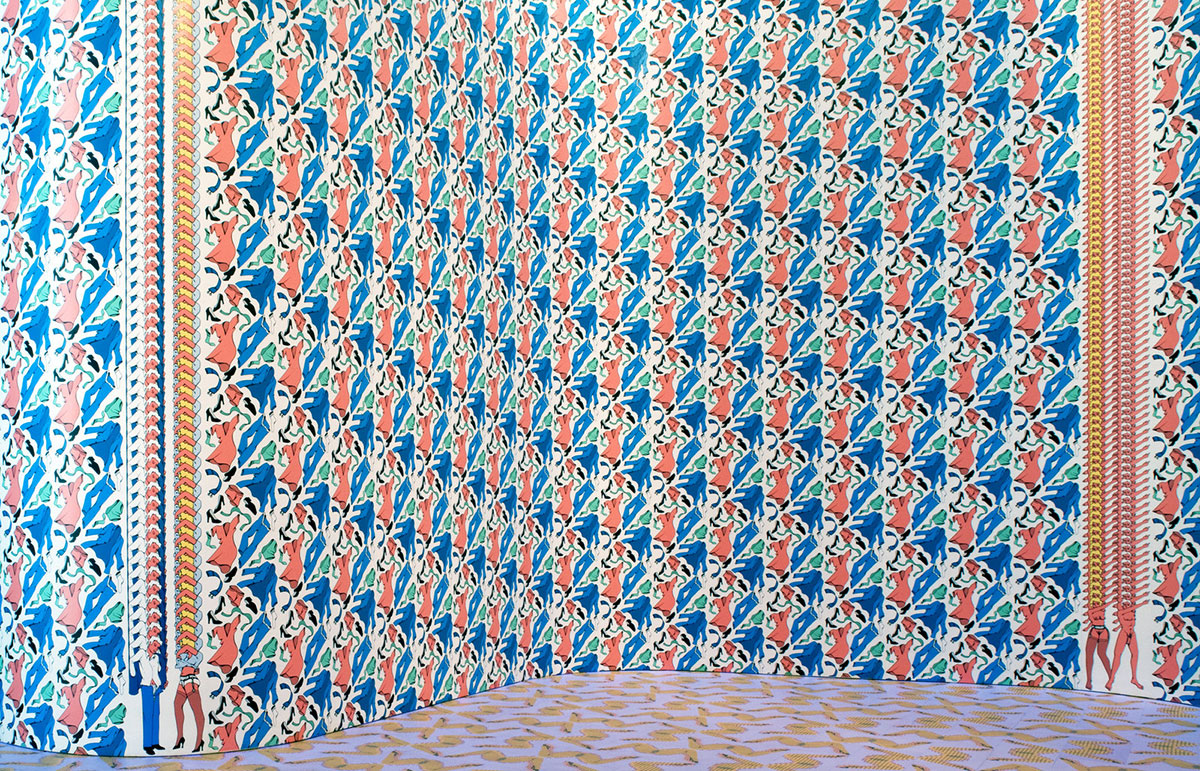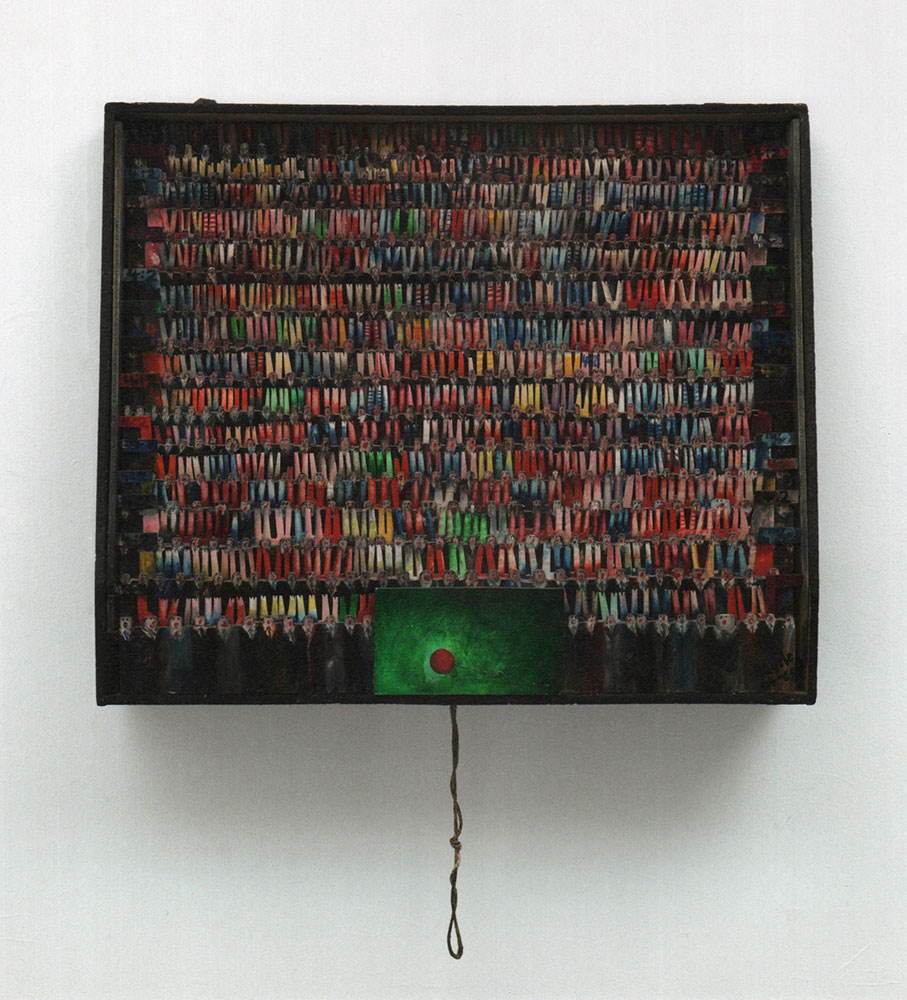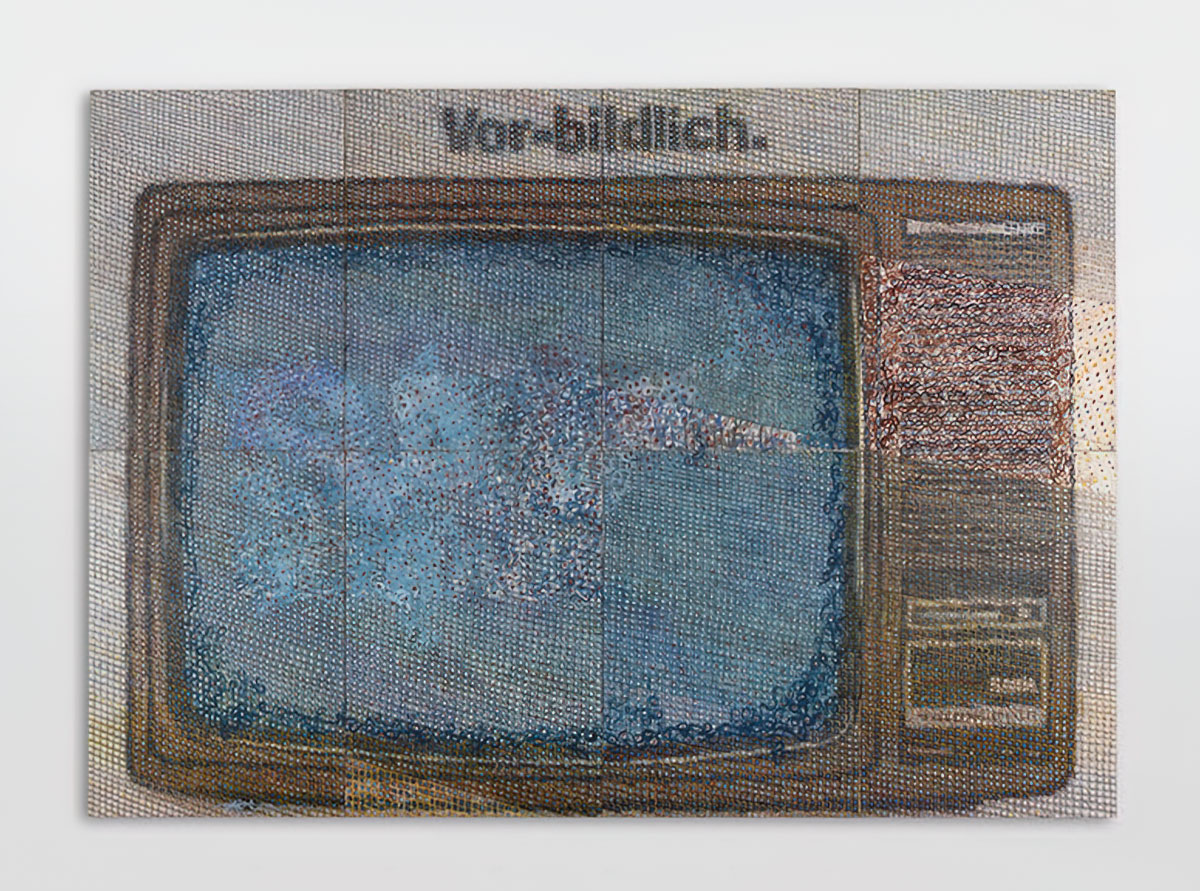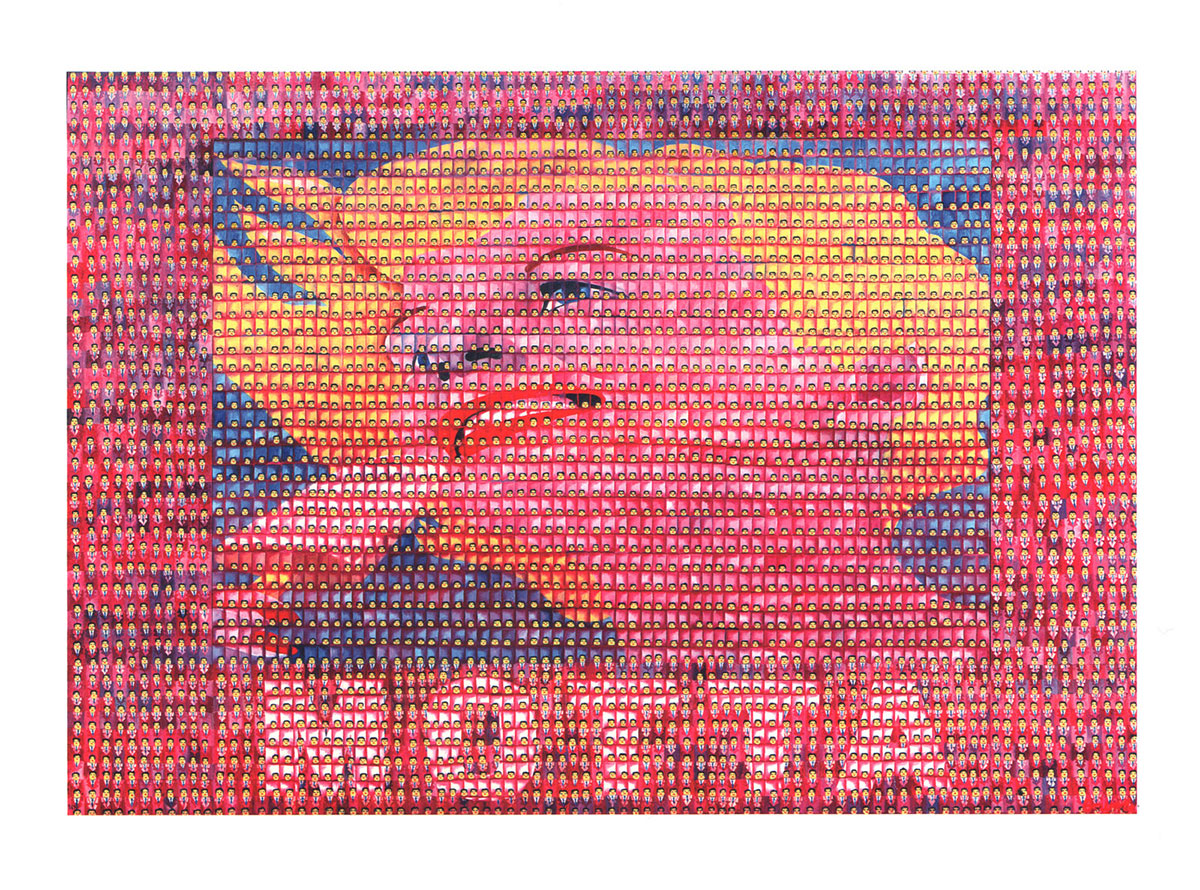PRESENTATION: Thomas Bayrle-Monotony in a Hurry
Thomas Bayrle’s graphically covered bodies and objects are a world made out of dot and grid, cell and body. Superstructures spread like the fantastical porridge over cities and land, cell after cell, yet never the same, to form an exquisite “jelly” of monotony. The grid rules and connects everything. A continuum of backwards and forwards, up and down, through which a rhythm is formed.
By Dimitris Lempesis
Photo: Gladstone Gallery Archive
In Thomas Bayrle’s work nothing is ever definite, but always in flux. Chaos is organization, individual is collective, and the humming rhythm of the cities and machines is silent meditation. In this time of uncertainty and mixed feelings, Thomas Bayrle’s new body of work, that is on show in his solo exhibition “Monotony in a Hurry” grapples with and negotiates our splintered culture, the strikingly frequent intersection of our aspirations and our anxieties, our hopes and our resentments. Continuing his uncannily prescient, presciently uncanny exploration of the ways in which images saturate, inform, transform, liberate, and implicate, Bayrle presents a series of “superforms” – the artist’s trademark portraits composed of repeated distortions of small, subtly unique images – of political, historical, and pop culture figures, including Xi Jinping, the Pope, and Kim Kardashian. Dense, occasionally impenetrable, evocative, these superforms play with the distances implicit in images of the famous and the infamous. We feel like we know them because their images are so much around us, and yet we do not – and cannot – know them precisely because they are all image. Bayrle’s is a visual vernacular that emerges from a thoughtful, playful, deliberately contradictory engagement with the high-low, marked by equal parts fascination and repulsion with capitalism, mass culture, authorianism. A Pop-by-way-of-Op Art, Bayrle’s work brightly invites a look, suggesting contemporary icons, as if the internet were a religion. Born in Berlin in 1937, Bayrle came of age in post-war Germany, defined simultaneously by guilt and the “economic miracle” of a booming economy. Initially trained as a weaver, he worked, in the late 60s and early 70s, as a graphic designer, and co-ran Gulliver Press, publishing artist’s books, lithographs, and posters, and lived, as he expressed in a 2018 interview on the occasion of his first major New York museum survey at the New Museum, “the contradictions of the time. During the day, I would work for Ferrero, Benckiser, Pierre Cardin, and McCann Erickson, the German factories and the American agencies, and at night I worked for the Marxists and the anarchists, the students, the Italian protest paper “Lotta Continua”, and the German extra parliamentary left”. The incongruity was a way, he believed, of experiencing something more complete and complex, and it has consistently defined his oeuvre, which marries critique and excitement, protest and celebration across silkscreens, illustrations and posters, kinetic paintings Bayrle termed “machines,” installations and environments. The superform gives sculptural form to individually flat elements, creating the illusion of dimension through repetition. Long interested in accumulation, Bayrle anticipated the digital age and the internet’s relocation of images from backdrop to foreground. His work interrogates how images signify and what happens to their significance when they amass. Like a visual equivalent of a word repeated until it loses its meaning, changes its very sound, the images emerging in and through repetition are a distortion, their meaning contestable. “I like the closeness of individual differences. Trying to be the same, but always failing. Or trying to be different and realizing you are just like all the others,” Bayrle said in the interview with the New Museum. With these new superforms, the artist asks us to see the similarities among public figures like the Pope and Mao Ze Dong, while remaining attuned to their differences. Like his earlier work, which often suggested the continuities of East and West, of communist ideology and the capitalist faith in mass, the new works are interested in correspondences and disjunctions, in the mixing of seemingly disparate patterns. At once, familiar and defamiliarized, the portraits play with the micro and macro, with the ways images–both as visual and as reputation–are always composed of other images, expanding upon and contracting themselves. Like a communist adman, Bayrle offers us a catchy vision of our cultural moment, polished to a shiny glimmer, with an undercurrent of nostalgia and an affectionate, incisive, witty indictment of late capitalism and its discontents.
Photo: Thomas Bayrle, Motta, 1966, Oil on wood, © Thomas Bayrle, Courtesy the artist and Gladstone Gallery
Info: Gladstone Gallery, 530 West 21st Street, New York, NY, USA, Duration: 17/3-23/4/2022, Days & Hours: Tue-Sat 10:00-18:00, www.gladstonegallery.com
